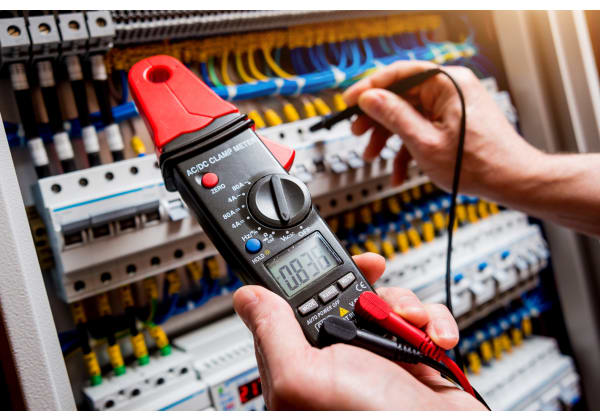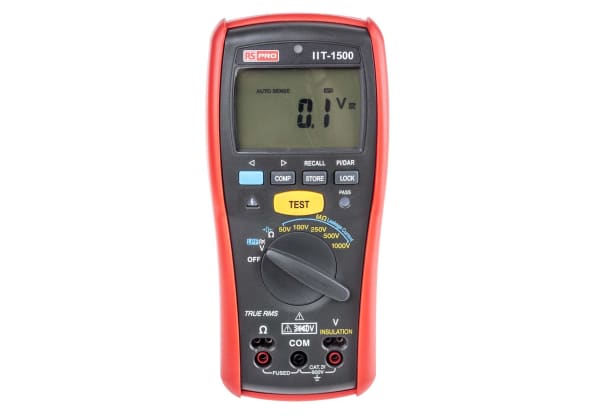- Published 12 Jun 2023
- Last Modified 29 Aug 2023
- 5 min
What are Ohmmeters Used for?
This guide will help you read and calibrate your ohmmeter and highlight the various types available.

Reviewed by Mithun Subbaroybhat, Technical Support Engineer (October 2022)
Ohmmeters are extremely useful instruments and are used for measuring electrical resistance. So, what is resistance measured in? The unit of resistance is named after the German scientist Georg Simon Ohm. The Ohm has been assigned the Greek letter omega (Ω).
You will find many different types of resistance-measuring instruments or ohmmeters available today and their uses vary considerably. At one end of the scale, we have the micro ohmmeter and at the other, we have the megohmmeters also called insulation testers. The micro-ohmmeters can measure extremely low values of resistances down to micro-Ohms (a micro-Ohm is 1 millionth of an Ohm) and below. The megohmmeters will measure extremely high values of resistance up to Tera Ohms (a tera Ohm is 1 million, million Ohms) and above. There are also analogue ohmmeters and digital ohmmeters for different applications.
Because of their diversity ohmmeters are useful for different purposes and are used in various applications and industries such as:
- Adjustments and testing of shunts in instrumentation
- Testing contact resistance in switchgear, connectors, and relays
- Testing transformers, coil resistance and terminal bonding
- Checking weld joint integrity
- Checking industrial and domestic electrical wiring
- Testing fuse and circuit breaker resistance
- Checking earth bonding
- Testing battery internal resistance
- Electronic component testing
- Printed circuit board fault finding
Modern ohmmeters have the benefit of being portable so you can take them out on the field relatively easily if needed. Some can store data where information can be stored on a USB stick for transfer to a computer for further analysis.
How Do Ohmmeters Work?
Because of their potential of measuring extremely low values of resistance, a standard two-probe wire test method is not sufficient. You will often see four-wire test probe systems employed. These operate on the Kelvin measurement technique.
A known current is applied to the resistance under test (R Test). The voltage is then measured at the same two points on either side of the resistance under test using two clips or the four-wire test probes. Ohm's law tells us that a unit of voltage divided by a unit of current is equal to a unit of resistance (V/I = R). So, measuring the voltage found across the test resistance and dividing that value by the injected current applied will give the value of the resistance. Most meters will have the ability to select an injection test current that best suits the resistance being measured.

How to Use an Ohmmeter
Let’s say you were wanting to test for the integrity of a terminal point on a high-current transformer. In this case, you could select a high value of test current. The High current would potentially show any weakness in the terminal bond due to an increase in temperature and therefore resistance due to the passing current.
An example of where a low-test current can be selected is if you wanted to use the meter for finding a short circuit on a printed circuit board (PCB). The smaller tracks on the PCB would not be able to stand heavy currents so a lower current can be selected in this case so as not to damage the tracks. A low voltage would be present so there is no risk of damaging onboard components. The meter can be effectively used for homing in on the short circuit between the PCB tracks due to its ability to read very low resistances. As you move the probes nearer the short circuit you would see a drop in resistance. The thermal effect of using a high-test current would be undesirable in this example.
Some meters have several modes of supplying test current. The main principle is to apply a static DC voltage whilst the injection current value is selected. These meters will suffice in most applications. However, you may find in some applications that thermal heating of the test joint is not wanted. Some meters minimise warm-up of the test piece by injecting pulsed current. Because the current is being applied in short bursts, thermal heating of the test piece becomes less of a problem.
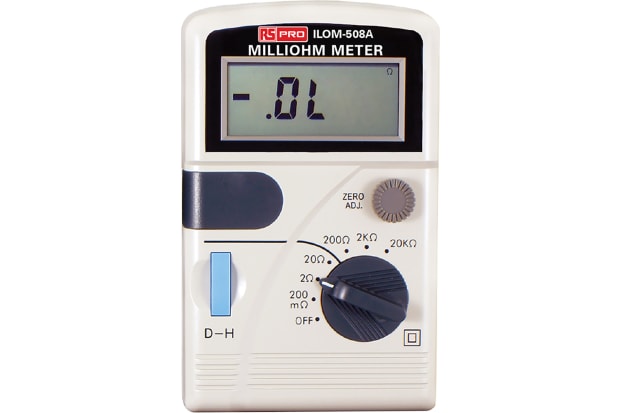
Milli-Ohmmeters
A typical milli-ohmmeter will operate using the four-wire Kelvin principle. They will generally measure down to 0.1 micro-Ohms. These are useful for measuring:
- Transformers
- Printed circuit boards
- Resistors
- Cables
- Connectors
- Welding points
- Motor coils
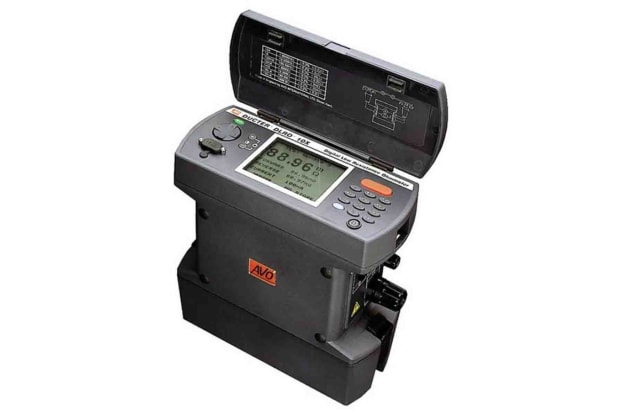
Micro Ohmmeters
The micro-ohmmeters tend to be more accurate and more specialised than the milli-ohmmeters. These will often have a resolution of 0.1 micro-Ohms. Applications that they can be used in include:
- Electric motors and generators
- Switch and contact breakers
- Transformers
- Cables
- Battery systems
- Aircraft
- Electronic components
- Bond and weld testing
Calibration of ohmmeters can be carried out by professional <u>calibration services</u> since specialist equipment is required. There are micro-ohmmeter calibrators that are used by calibration services which have a matrix of test points ranging from micro-Ohms to several Ohms. The accuracy of the equipment under test is checked and calibrated by connecting the test probes of the ohmmeter under test up to the calibrated and labelled connection studs provided on the calibrator. Often these calibrators need to be kept at a specific temperature and humidity to ensure absolute accuracy.
Micro Ohmmeters Ductors
Ohmmeters that can test for low resistance are generally known as ductors. A ductor tester can be in the form of micro, mega and milli-ohmmeters or a digital low-resistance ohmmeter.
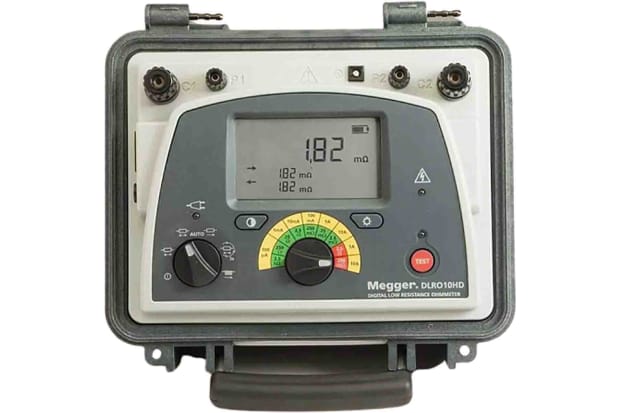
Low Resistance Ohmmeters
To be classed as a low-resistance ohmmeter it would typically be able to measure less than one Ohm. You will find many of these meters will use the four-wire Kelvin system. They can be extremely useful and are used in many industries including:
- Laboratory and research
- Manufacturing and production
- Electricity power distribution
- Rail
- Aviation
